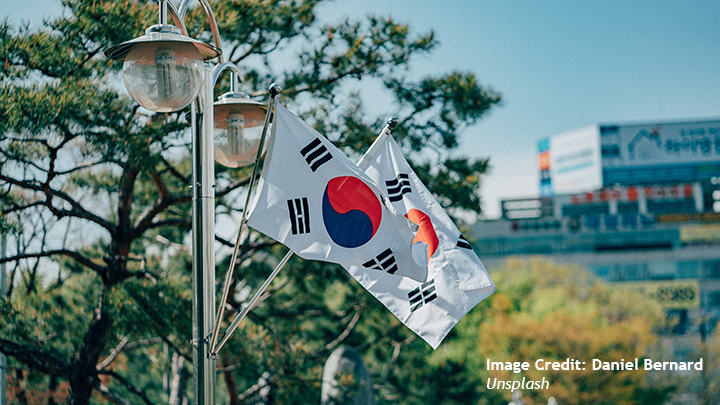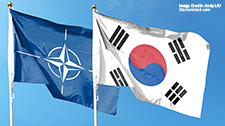Will Yoon’s Indo-Pacific Strategy Tackle the China Threat?

Jagannath P. Panda and Mitch Shin
In late-December 2022, South Korea under the relatively new presidency of Yoon Suk-yeol effectively concluded its policy shift from “strategic ambiguity” by releasing the “Strategy for a Free, Peaceful, and Prosperous Indo-Pacific Region.” The document sets forth a wide-ranging ambit in cooperation, including on traditional and non-traditional security domains such as economic security; maritime security; counter-terrorism; nuclear non-proliferation; climate action; energy security; cyber security; and new technologies. One of the most important features is its focus on “future-oriented” diplomacy, namely the centrality of “collective” partnerships with Indo-Pacific allies to build a sustainable and resilient regional order. The strategy envisions the ultimate goal of developing the Republic of Korea (ROK) as a “Global Pivotal State” – which has been a mainstay of Yoon’s doctrine.
Until Yoon took over office in March, South Korea’s regional strategy involved hedging its bets: As a state that is highly reliant on China for its economic sustenance and the United States – its principal ally – for its security considerations, South Korea has for long avoided siding with either great power. The difficulty of managing bilateral relations with both China and the US pre-dates the Yoon administration; different governments have sought to manage ROK’s security versus trade dilemma entrapment by the U.S.-China rivalry through varied strategies – and to varying degrees of success. To some extent, Yoon’s Indo-Pacific policy is the present administration’s response to the geopolitical complexities that have arisen with the intensifying great power competition and ever-widening divergence between the U.S. and China.
In line with South Korea’s cautious (yet bold) positioning between its two indispensable major partners Beijing and Washington, Seoul’s Indo-Pacific strategy is prudent, pragmatic, and a way to enhance systematic flexibility, as well as contributes in creating a balancing act against great power politics. It highlights South Korea’s plans to pursue deeper partnerships beyond China and the U.S., through Indo-Pacific partners like the Association of Southeast Asian Nations (ASEAN), Japan, Canada, Mongolia, India, Australia, and New Zealand, as well as like-minded states in the Middle East, Africa (on the coast of the Indian Ocean), Europe, and Latin America. In other words, by expanding the country’s trade, investment, and security relationships beyond China and the U.S., the Yoon government is looking to preserve national and regional prosperity and stability and enhance South Korean leadership in the region.
At the same time, the strategy barely mentions China, which in itself is evidence of Seoul’s determination to continue seeking a carefully calibrated balance between its largest trade partner (China) and military ally (the US). In fact, China is recognized as a “key partner for achieving prosperity and peace in the Indo-Pacific” as Seoul aims to “nurture a sounder and more mature relationship” with Beijing that is built upon “mutual respect and reciprocity” and “guided by international norms and rules.” Seoul’s plans to resume the ROK-Japan-China trilateral summit (alongside the ongoing ROK-U.S.-Japan cooperation) for harmonious cooperation between the three East Asian powers consolidates the balancing act narrative.
Although Yoon indicated he would take a tough line on China during his presidential campaign, South Korea’s interdependence on China makes any outright alignment with the U.S. and against China realistically unsustainable. While the U.S. and its allies like Japan and Australia (and to some extent India) have openly criticized China’s attempts to assert its maritime and territorial claims and unilaterally change the status quo, and its actions violating human rights in Hong Kong and Xinjiang, South Korea has taken a more muted stance to avoid antagonizing China. In other words, South Korea’s Indo-Pacific strategy is framed around the country’s high export dependency, which demonstrates the limitations and risks that it faces in totally transforming its regional geopolitics and its struggle to formulate a long-term sustainable radical vision.
Notwithstanding the deliberate meek attention to China, South Korea’s Indo-Pacific policy does indirectly feature the China threat and Seoul’s commitment to countering it. For instance, the strategy raises concerns over Chinese military actions in the Taiwan Strait and reaffirms Seoul’s commitment to peace and security in the Taiwan Strait, as a factor critical to maintaining stability on the Korean Peninsula and the Indo-Pacific at large. At the same time, the policy highlights the importance of peace, stability, and freedom of navigation in the South China Sea, especially due to its strategic significance for sea lines of communication and trade routes.
North Korea, on the other hand, has been clearly labelled as a “serious threat to peace and stability” not just in East Asia but globally. The heightened trilateral cooperation measures with the U.S. and Japan – with which relations have been historically fraught – highlight that deterrence will remain the favored aspect over dialogue vis-à-vis North Korea. In that respect, the dependence on China, which has been a critical stakeholder in North-South negotiations, will be considerably reduced.
Notably, South Korea’s release of its Indo-Pacific policy and declaration of gradually building cooperation with the increasingly relevant Quadrilateral Security Dialogue (Quad; comprising the U.S., Japan, Australia, and India) demonstrates a marked shift toward internalizing the Indo-Pacific concept. It solidifies the ROK’s intent to acquire greater strategic and foreign policy autonomy, as well as to transform from a peripheral player to central one by capitalizing on its as yet underutilized middle power status and capabilities.
Therefore even as South Korea’s strategy for a free, peaceful and prosperous Indo-Pacific region seems at the outset only mildly concerned with the threat posed by China, it has taken a non-confrontational but reasonable approach However, whether the strategy’s implementation to address the North Korean and Chinese threats will be effective in practice will depend on not only the geopolitical headwinds, but also how well the Yoon government is able to manage ROK’s bilateral relationship with China and the U.S., as well as the potential contradictions between economic growth, supply chain resiliency, and security.
Related Publications
-
South Korea’s Indo-Pacific Strategy, Atmanirbhar Bharat, and the IPEF: Convergence and Commonality
For some time now, the existing multilateral networks such as those of the United Nations (UN) system have been largely ineffective in providing good global governance and helping create resilience, […]
-
Washington Declaration: Beyond Korea, What it Means for India?
In April 2023, South Korea and the United States released the Washington Declaration to reiterate and upgrade their treaty alliance. In outlining a joint nuclear deterrence strategy, the Declaration reaffirmed […]
-
Korea Looks to Europe: Its Growing Military-Strategic Cooperation with NATO
Korea is looking to Europe in the military-strategic dimension. It wants to boost ties with NATO even as strengthening relations with the AP4 (four Asia-Pacific partners) forms an important aspect […]
-
ISDP Annual Report 2023
ISDP’s Annual Report for the year 2023. We look back on 2023, a year in which tensions and conflicts captured the strategic space in ISDP’s focus areas, making headlines around […]
-
South Korea as a Nuclear State: Trade-Offs and Choices
South Korea’s launch of its own Indo-Pacific strategy in December 2022 started the country’s ascent into “strategic clarity” for the US-led Indo-Pacific construct, winning favor with Washington for this policy […]




